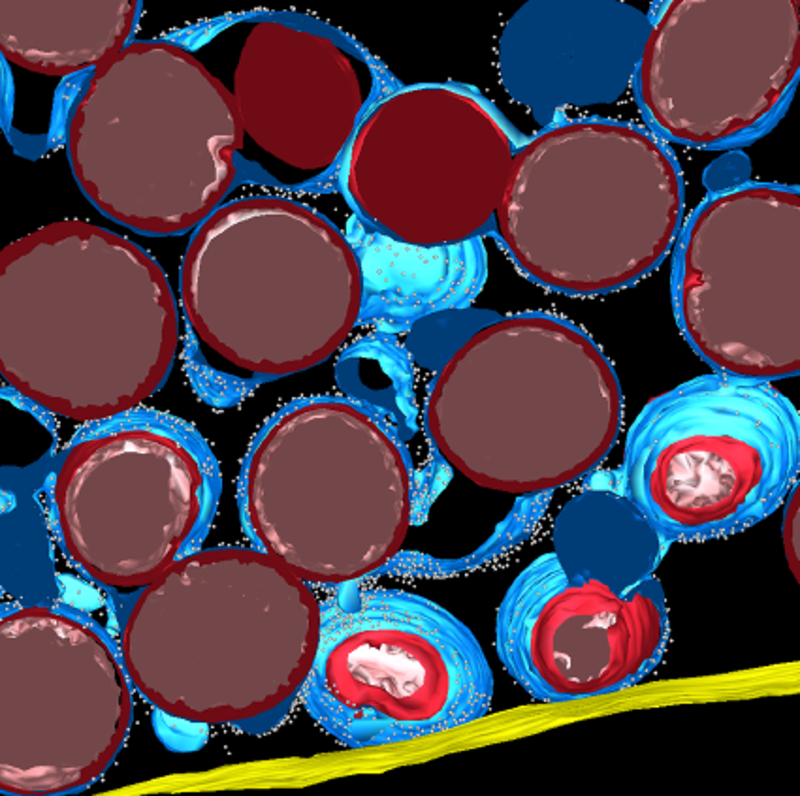PCA Publications
Grones C, et al. 2024. Best practices for the execution, analysis, and data storage of plant single-cell/nucleus transcriptomics. The Plant Cell. Online ahead of print.
PMID: 38231860
Fahlgren N, et al. 2023. Toward a data infrastructure for the Plant Cell Atlas. Plant Physiology. 191(1).
PMID: 36200899
Dwyer W, et al. 2022. Renaming Indigenous crops and addressing colonial bias in scientific language. Trends in Plant Science. 27(12).
PMID: 36163314
Mehta D, et al. 2022. The incongruity of validating quantitative proteomics using western blots. Nature Plants. 8(12).
PMID: 36456804
Rice SL, et al. 2022. First Plant Cell Atlas symposium report. Plant Direct. 6(6).
PMID: 35774620
Rhee SY & Rice SL. 2022. Growing a community: Building the Plant Cell Atlas. Futurum Careers.
DOI: https://doi.org/10.33424/FUTURUM256
Birnbaum KD, et al. 2022. The Plant Cell Atlas: focusing new technologies on the kingdom that nourishes the planet. Plant Physiology. 188(2).
PMID: 34935969.
Plant Cell Atlas Consortium, et al. 2021. Science Forum: Vision, challenges and opportunities for a Plant Cell Atlas. eLife. 10:e66877.
PMID: 34491200
Eckelbarger M, et al. 2021. Recognizing Pioneering Black Plant Scientists in Our Schools and Society. Trends in Plant Science. 26(10).
PMID: 34507887
Cole B, et al. 2021. Plant single-cell solutions for energy and the environment. Communications Biology. 4(1).
PMID: 34385583
Rice SL, et al. 2020. First plant cell atlas workshop report. Plant Direct. 4(10).
PMID: 33083684
Traducción al Español: Reporte del Primer Grupo de Trabajo del Atlas Celular de Plantas
Rhee SY, et al. 2019. Towards Building a Plant Cell Atlas. Trends in Plant Science. 24(4).
PMID: 30777643
PMID: 38231860
Fahlgren N, et al. 2023. Toward a data infrastructure for the Plant Cell Atlas. Plant Physiology. 191(1).
PMID: 36200899
Dwyer W, et al. 2022. Renaming Indigenous crops and addressing colonial bias in scientific language. Trends in Plant Science. 27(12).
PMID: 36163314
Mehta D, et al. 2022. The incongruity of validating quantitative proteomics using western blots. Nature Plants. 8(12).
PMID: 36456804
Rice SL, et al. 2022. First Plant Cell Atlas symposium report. Plant Direct. 6(6).
PMID: 35774620
Rhee SY & Rice SL. 2022. Growing a community: Building the Plant Cell Atlas. Futurum Careers.
DOI: https://doi.org/10.33424/FUTURUM256
Birnbaum KD, et al. 2022. The Plant Cell Atlas: focusing new technologies on the kingdom that nourishes the planet. Plant Physiology. 188(2).
PMID: 34935969.
Plant Cell Atlas Consortium, et al. 2021. Science Forum: Vision, challenges and opportunities for a Plant Cell Atlas. eLife. 10:e66877.
PMID: 34491200
Eckelbarger M, et al. 2021. Recognizing Pioneering Black Plant Scientists in Our Schools and Society. Trends in Plant Science. 26(10).
PMID: 34507887
Cole B, et al. 2021. Plant single-cell solutions for energy and the environment. Communications Biology. 4(1).
PMID: 34385583
Rice SL, et al. 2020. First plant cell atlas workshop report. Plant Direct. 4(10).
PMID: 33083684
Traducción al Español: Reporte del Primer Grupo de Trabajo del Atlas Celular de Plantas
Rhee SY, et al. 2019. Towards Building a Plant Cell Atlas. Trends in Plant Science. 24(4).
PMID: 30777643







